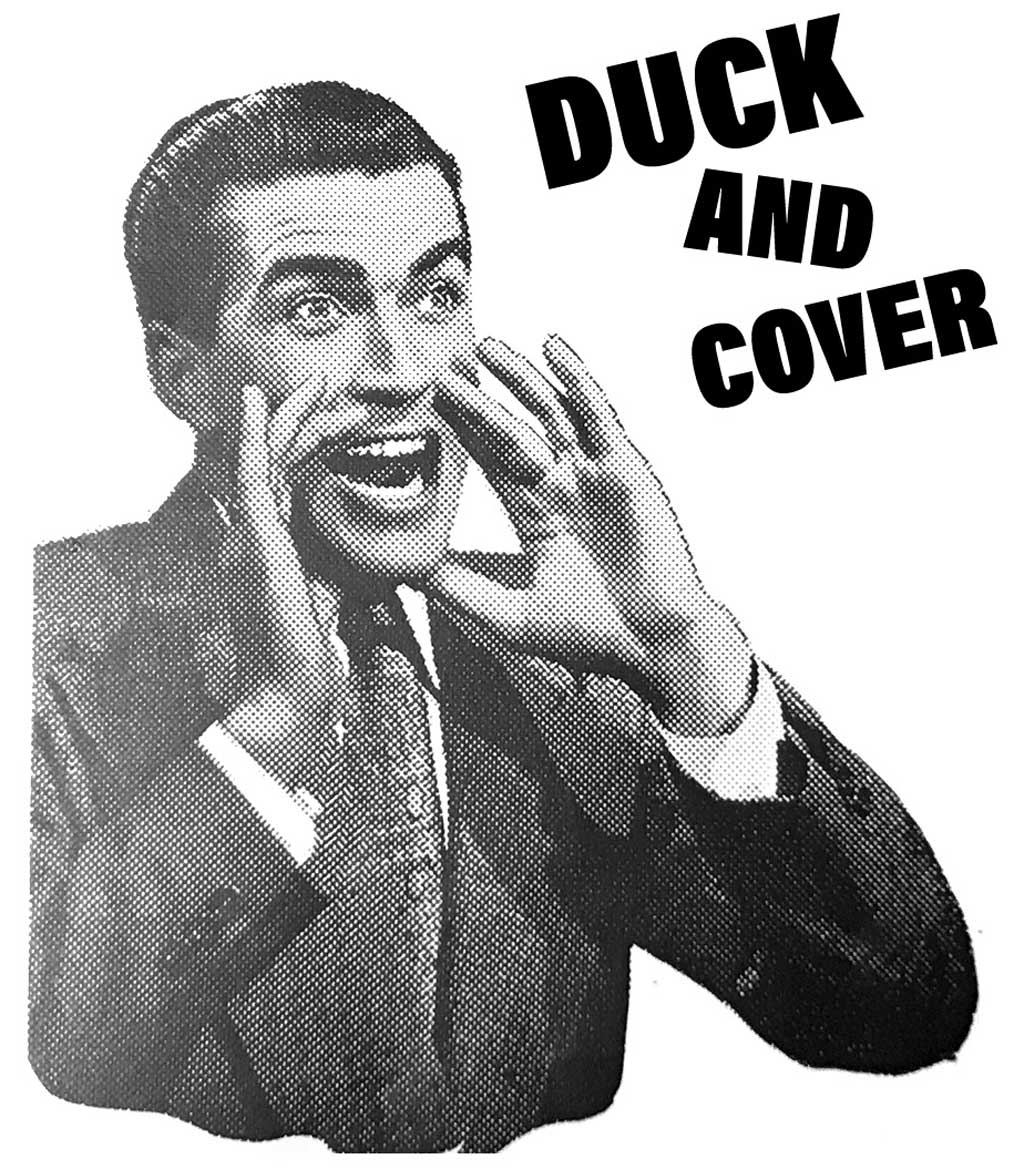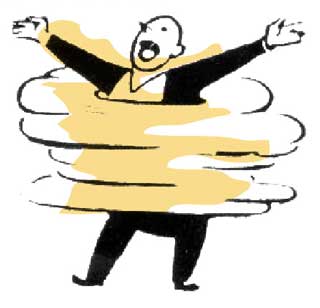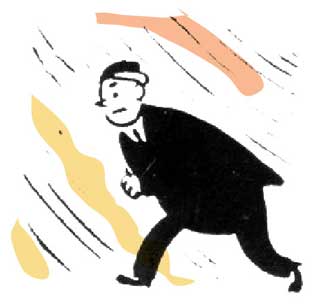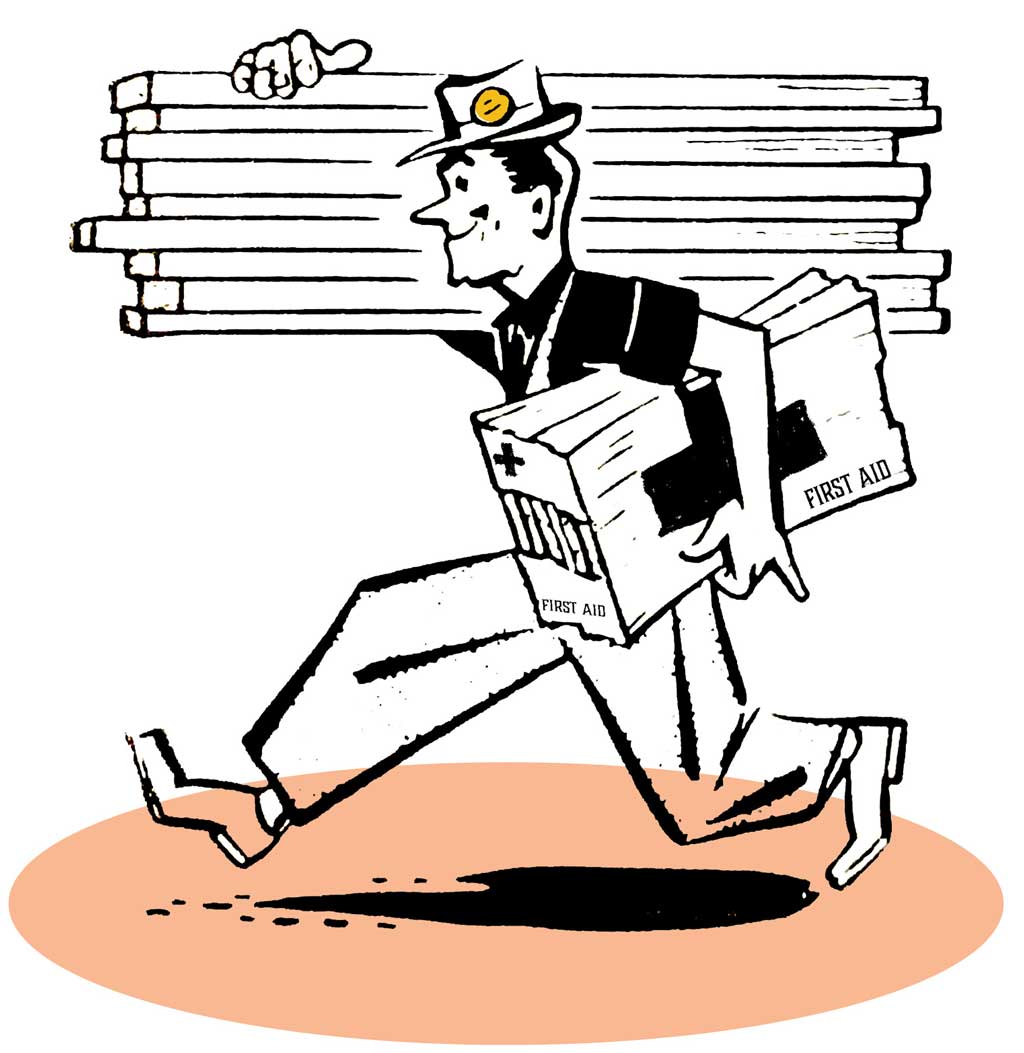Many would be hard pressed to remember the last time a student had to participate in a nuclear incident drill (remember ducking under school desks?), especially since the end of the Cold War.
But various threats from North Korea and an accidental emergency alert warning Hawaiian residents of a ballistic missile threat have the possibility of nuclear warfare weighing on many Americans’ minds.
 The Federal Civil Defense Administration became a government agency Jan. 12, 1951, nearly six years after the United States dropped the only two deployed atomic bombs on Hiroshima and Nagasaki, Japan, during World War II. The Hiroshima blast killed approximately 80,000 people immediately; Nagasaki saw 40,000 perish immediately, and thousands more died later of radiation exposure.
The Federal Civil Defense Administration became a government agency Jan. 12, 1951, nearly six years after the United States dropped the only two deployed atomic bombs on Hiroshima and Nagasaki, Japan, during World War II. The Hiroshima blast killed approximately 80,000 people immediately; Nagasaki saw 40,000 perish immediately, and thousands more died later of radiation exposure.
The civil defense administration is no longer a government agency, but in the ’50s, part of its responsibility was to educate people on emergency preparedness and responses to a nuclear attack. From that effort came the familiar “duck and cover” instruction – school kids taught to take cover under desks or against walls to protect themselves from a nuclear detonation.
Advice from the FCDA included seeking the nearest shelter if you were outdoors when you saw the flash of light, and staying indoors as long as possible to avoid radioactive fallout. Many families built bomb shelters and stocked them with food and water.
Preparing for nuclear war was a serious business back then.
Today, many people scoff at those simple instructions and laugh at the illustrated educational videos released by the FCDA.
“How is hiding under a desk going to save me from a nuclear blast?” you might ask.
Shane Connor, in the business of answering such questions for the last 20 years, says people would be surprised at how that 1950s advice could save thousands of lives during a nuclear attack today.
“It’s not that the information is not there or that it is not good; it’s that people are not receptive to it because they are convinced that if a nuke goes off and they don’t all die immediately, they’ll wish they had,” says Connor, co-owner of a company that recalibrates and recertifies old geiger counters, survey meters and dosimeters, and produces anti-radiation pills. “Ninety percent of the expected and projected casualties are 100 percent avoidable if the affected population knows ahead of time what to do and what not to do.”
That old “duck and cover” routine is definitely the way to go, he says.
 “Think of it this way. If a nuke fell – there was a bright flash on the other side of Tulsa or Oklahoma City – everybody at home, at work, at school is going to impulsively rush to the nearest window to crane their neck to see what it was – and they will get there just in time for that delayed blast wave to shred them,” he says.
“Think of it this way. If a nuke fell – there was a bright flash on the other side of Tulsa or Oklahoma City – everybody at home, at work, at school is going to impulsively rush to the nearest window to crane their neck to see what it was – and they will get there just in time for that delayed blast wave to shred them,” he says.
There are plenty of other considerations after a blast – most importantly, minimizing radiation exposure.
According to the Environmental Protection Agency, a large amount of radiation exposure can cause sickness or death within hours or days. But even chronic exposure to low levels of radiation over a long period of time can cause cancer, benign tumors, cataracts and potentially harmful genetic changes.
Because fewer people seem to build underground fallout shelters stocked with canned goods and blankets these days, it might be a good idea to have a plan for a nuclear attack.
According to ready.gov, a website launched by the Department of Homeland Security and the Federal Emergency Management Agency as a national public service campaign in February 2003, fallout is most dangerous in the first few hours after detonation.
During this time, the fallout emits the highest levels of radiation, but it also takes time for fallout to hit the ground – often more than 15 minutes for areas outside the immediate blast zones.
This is probably the most important 15 minutes of your life – your chance to prevent significant radiation exposure from the onset. Most importantly, ready.gov says to get indoors. Brick or concrete buildings are the best.
Next, remove contaminated clothing and wipe or wash off unprotected skin as soon as possible. Shower, if you can, but don’t use conditioner as it will help radioactive fallout stick to your hair instead of being washed off.
Finally, go to the basement or middle of the building, and stay away from the walls and roof.
If there’s power, tune into television or radio broadcasts for updates from authorities. Battery-operated and hand-crank radios will function after a nuclear detonation, but mobile phone, television and internet services may be disrupted. Stay indoors – wait to reunite with loved ones for at least 24 hours.
Being prepared, even somewhat, can make a difference between life and death. Invest in a battery-operated or hand-cranked radio for emergencies. Identify potential shelters where you live and work.
But if you are outdoors during a detonation, take cover as quickly as possible behind anything that might offer protection. Duck down in a vehicle. Lie face down on the ground to protect your face. Then get inside the nearest shelter. You’ll have 10 minutes or so before fallout arrives – use those minutes wisely.
 INFORMATION PREPARATION
INFORMATION PREPARATION
Make sure your family has a plan in case of any emergency by keeping the following information in your supply kit or somewhere you can access it during a disaster.
- Designate neighborhood, out-of-neighborhood and out-of-town meeting places.
- Make a list of family members’ names, dates of birth and Social Security numbers with specific medical information on each.
- Write down where your family spends the most time each day with work addresses, school addresses and other places you frequent – and include those places’ evacuation locations, as well.
- Make wallet-sized emergency plan information cards for your family to carry with them – include important contacts and medical information on the cards.
Source: Ready.gov/FEMA
Hazards Related to Nuclear Explosions

Bright flash – could cause temporary blindness.
 Blast wave – can cause injury and may damage structures several miles from the blast.
Blast wave – can cause injury and may damage structures several miles from the blast.
 Fire and heat – can cause burns or death, and damage to structures several miles from the blast.
Fire and heat – can cause burns or death, and damage to structures several miles from the blast.
 Electromagnetic pulse – could damage electrical equipment and electronics several miles from the detonation.
Electromagnetic pulse – could damage electrical equipment and electronics several miles from the detonation.
Fallout – radioactive, visible dirt and debris raining down from several miles up that can cause sickness to those outside.
Source: Ready.gov.
Prep for Nuclear Fallout in High Style
For “one percenters,” the luxurious Survival Condo, built in former Atlas missile silos in Kansas, should keep you safe. Homes sell for $3 million and up, and owners may live in them now or show up when a crisis occurs, according to the website, survivalcondo.com. These condos are touted as able to “withstand a nuclear explosion” and are said to be “one of the strongest structures built by man.”

In addition, the Survival Condo website says there are enough resources in place to last five years after a nuclear incident. With an indoor shooting range, wind turbine, aquaculture, hydroponic food, military-grade security, exercise facility, indoor pool, dog park, arcade, classroom, library, movie theater and high-speed elevator, it doesn’t sound like a bad place to spend the next five years – if you can come up with that kind of cash. The website indicates that banks won’t loan money for such condos, so it’s better to have cash in hand.
 Supply Checklist
Supply Checklist
You need specific supplies on hand in case of any disaster, particularly when you may not have food, water or electricity for many days. Routinely check on the freshness of each item.
- One gallon of water per person, per day, for at least three days
- At least a three-day supply of
non-perishable food - Battery-powered or hand-crank radio and a NOAA Weather Radio with tone alert and extra batteries for both
- Flashlight and extra batteries
- First aid kit
- Whistle to signal for help
- Dust masks, plastic sheeting and duct tape
- Moist towelettes, garbage bags and plastic ties
- Wrenches or pliers to turn off utilities
- Manual can opener
- Local maps
- Prescription medications and glasses
- Infant formula and diapers
- Pet food and extra water for pets
- Important family documents, such as insurance policies and identification papers/cards
- Cash or traveler’s checks
- Emergency reference material, such as a first-aid book
- Sleeping bags or warm blankets for each person
- Complete changes of clothing for each person
- Household chlorine bleach and a medicine dropper to disinfect water (treat water by using 16 drops per gallon)
- Fire extinguisher
- Matches in a waterproof container
- Feminine supplies and personal hygiene items
- Mess kits/utensils for cooking and eating
- Paper and pencils
- Books, games, puzzles or other activities for children
Source: Centers for Disease Control and Prevention






















![nuke-AdobeStock_134796978-[Converted]](https://b1523572.smushcdn.com/1523572/wp-content/uploads/2018/04/nuke-AdobeStock_134796978-Converted-e1524516223548.jpg?lossy=1&strip=0&webp=1)
 INFORMATION PREPARATION
INFORMATION PREPARATION Supply Checklist
Supply Checklist